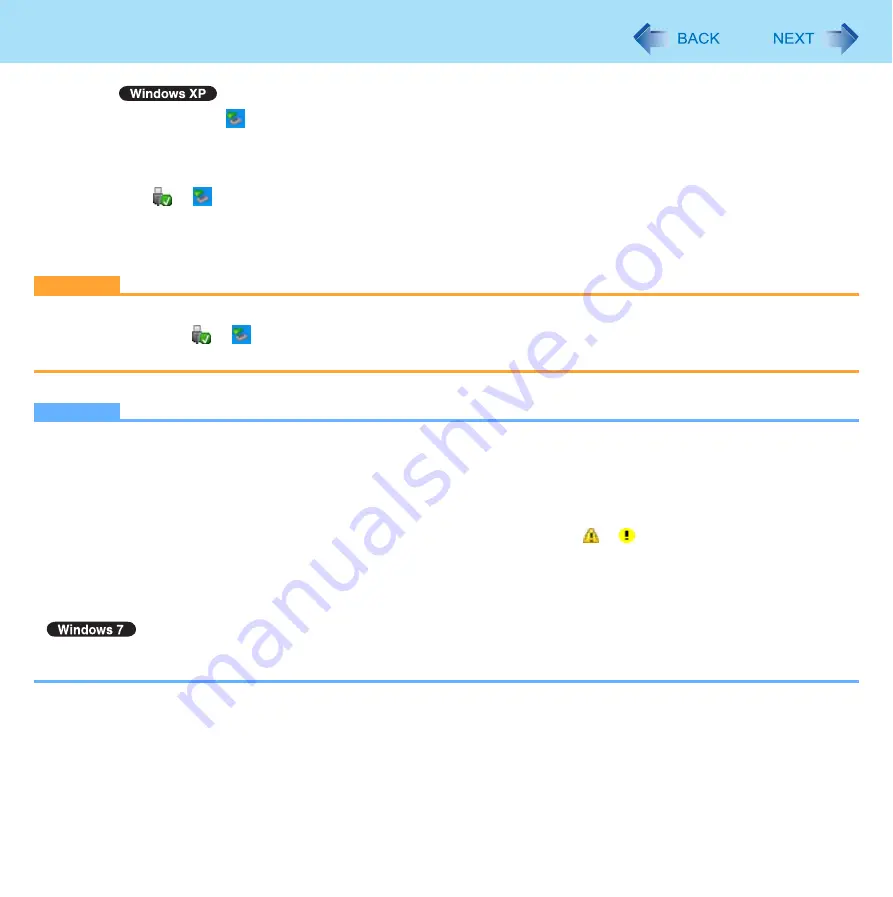
56
USB Devices
A
Double-click
on the notification area and select the USB device, then click [Stop].
B
Follow the on-screen instructions.
These steps are not necessary when;
• Removing the device after turning off the computer.
•
or
is not displayed.
• The device does not appear in the list in step
A
.
2
Remove the USB device.
CAUTION
<Only for model with Smart card slot>
If you double-click
or
, [USB Smart Card Reader] is displayed in the list, but do not select this item. Removing
this item is not possible. Restart the computer in case you select this.
NOTE
You may need to install the driver for the USB device. Follow the on-screen instructions or refer to the instruction man-
ual of the USB device.
You may need to install the driver again when connecting the device to another port.
When a USB device is connected, sleep
and hibernation may not function normally. If the computer does not start up
normally, remove the USB device and restart the computer.
When the USB device is removed and then inserted while the computer is on, or may appear in the Device Man-
ager and the device may not be correctly recognized. In this case, remove and connect the device again, or restart the
computer.
When the USB device is connected, power consumption increases. Remove the USB device when it is not in use,
especially when operating by battery power.
If the computer enters sleep or hibernation while a USB keyboard or mouse is connected, touching the USB keyboard
keys or mouse will resume the computer.
*1
Windows XP: standby
















































